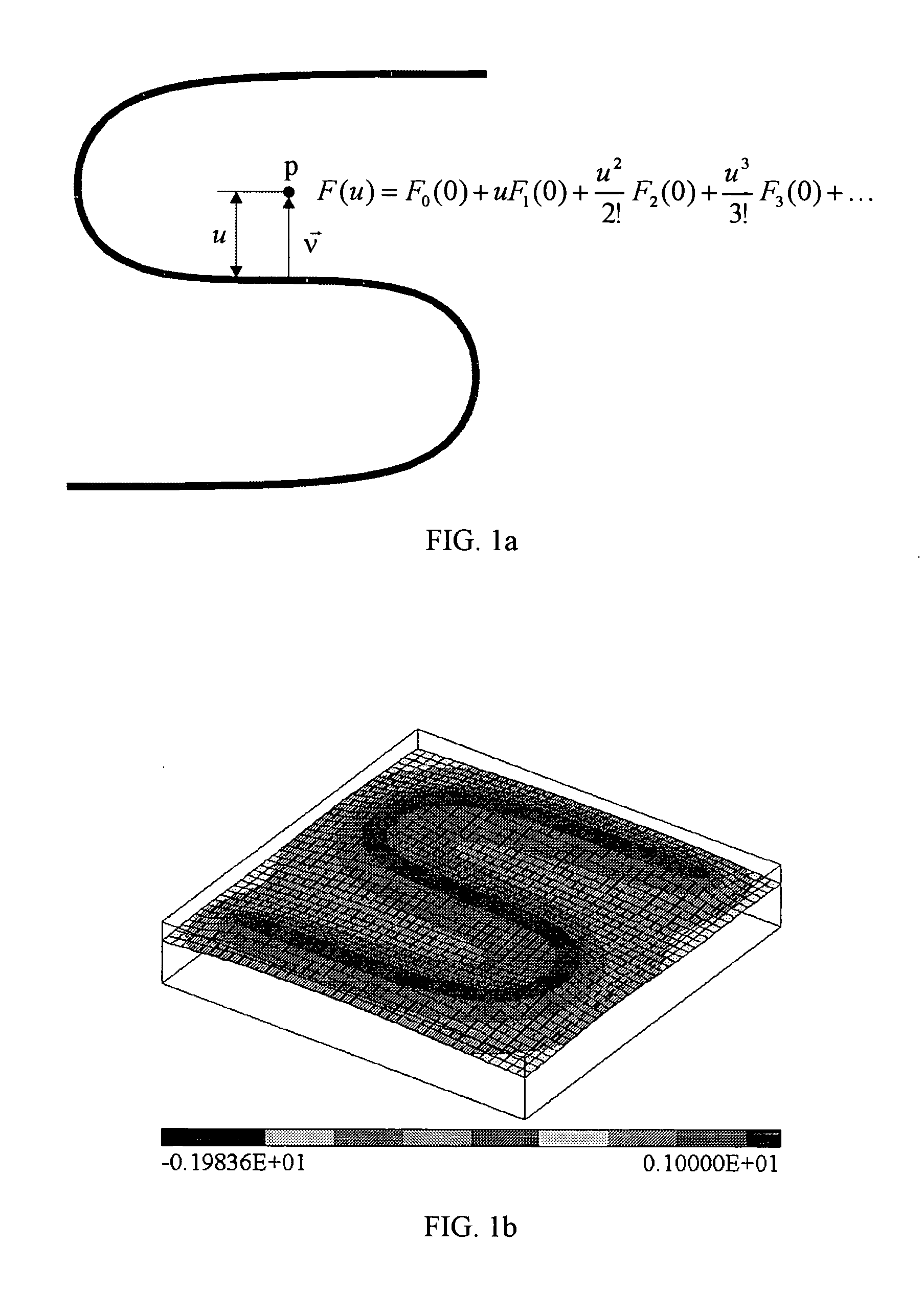Modeling and analysis of objects having heterogeneous material properties
a technology of heterogeneous material and modeling techniques, applied in the field of engineering design, modeling and analysis of can solve the problems of time-consuming and difficult chores, lack of modeling techniques available for objects having heterogeneous material properties, and many difficult implementations
- Summary
- Abstract
- Description
- Claims
- Application Information
AI Technical Summary
Benefits of technology
Problems solved by technology
Method used
Image
Examples
Embodiment Construction
A. Material Features, Material Functions, and Constraints
The invention assumes that one is provided with a geometric model of an object (or features of an object) with certain defined material property constraints (i.e., material properties are known / defined at one or more locations on the model). The task is then to define one or more material functions—a representation of a material property—that varies (usually continuously, but sometimes discretely) from point to point throughout the model, including its boundary and interior, subject to some given constraints (design, manufacturing, etc.). Throughout this document, the term “material feature” will be used to denote a point, boundary or region of a model at which material property values and / or rates are defined. It should be understood that a material feature may or may not be a subset of a solid object being modeled, and it may merely be defined because it provides a convenient means for defining material distribution through...
PUM
 Login to View More
Login to View More Abstract
Description
Claims
Application Information
 Login to View More
Login to View More - R&D
- Intellectual Property
- Life Sciences
- Materials
- Tech Scout
- Unparalleled Data Quality
- Higher Quality Content
- 60% Fewer Hallucinations
Browse by: Latest US Patents, China's latest patents, Technical Efficacy Thesaurus, Application Domain, Technology Topic, Popular Technical Reports.
© 2025 PatSnap. All rights reserved.Legal|Privacy policy|Modern Slavery Act Transparency Statement|Sitemap|About US| Contact US: help@patsnap.com



